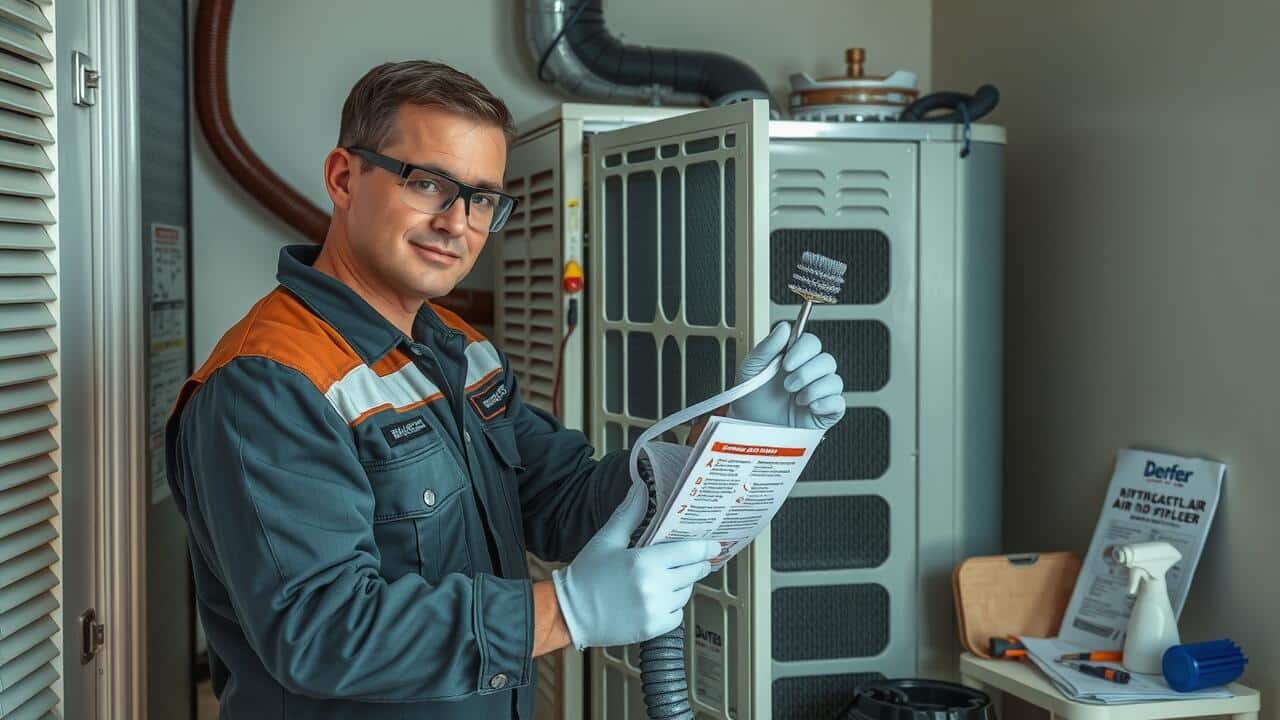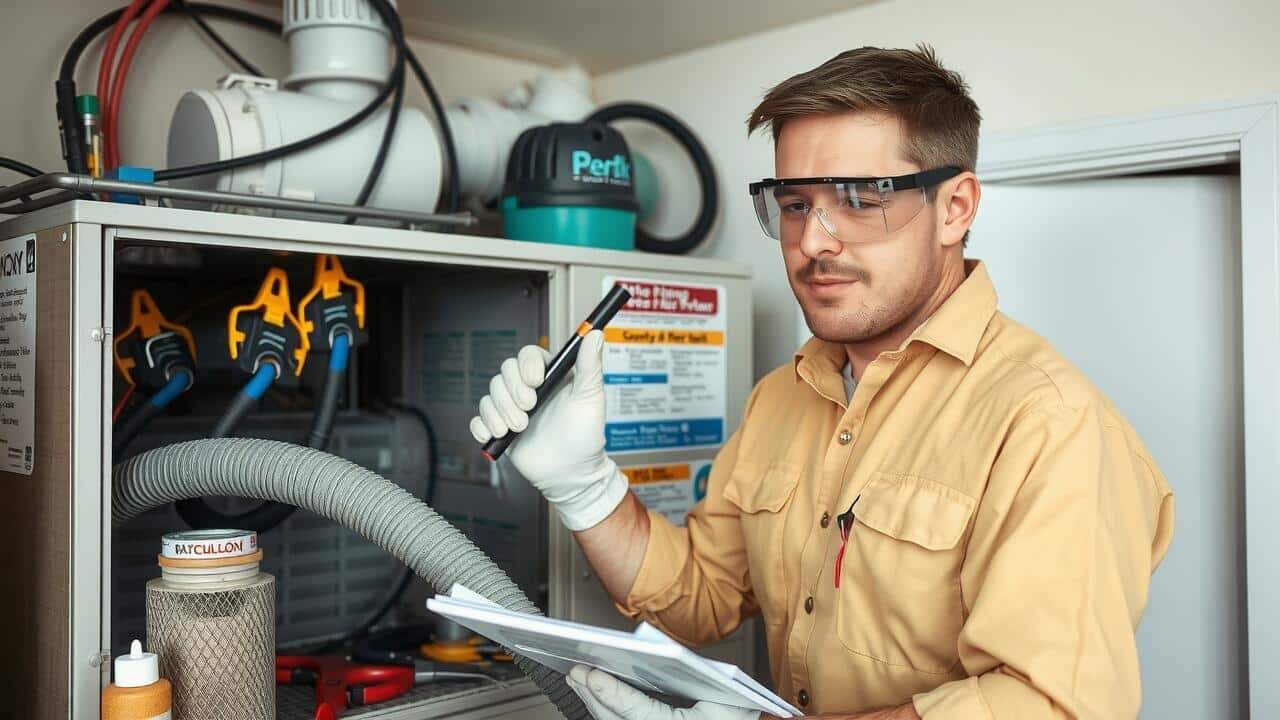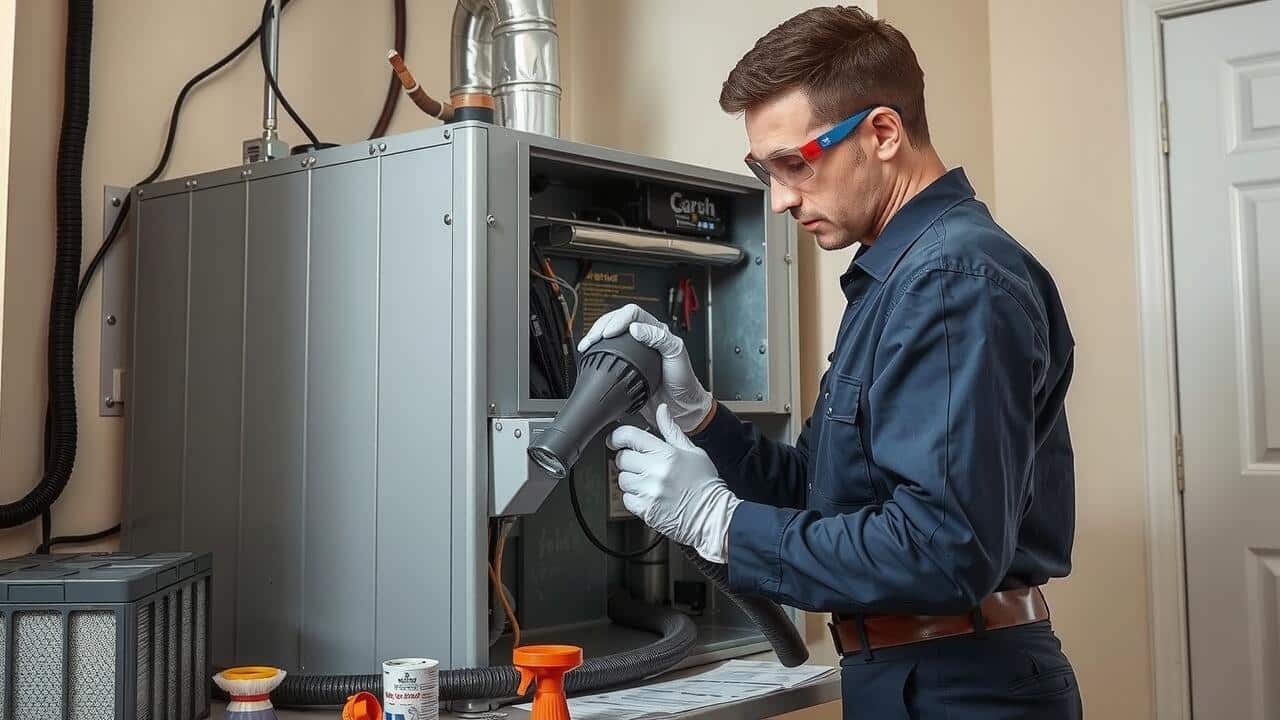
Table Of Contents
Cleaning the Coils and Fins
Cleaning the coils and fins of your air handler is a crucial step in maintaining optimal performance and ensuring indoor air quality. These components can accumulate dirt, dust, and moisture over time, creating an environment conducive to mold growth. To begin the cleaning process, first, turn off the power to the unit to avoid any accidents. Remove any protective covers, and carefully inspect the coils and fins for visible mold or dirt buildup. A soft brush can help dislodge debris, while a vacuum cleaner with a soft brush attachment can effectively remove loose particles.
For more thorough cleaning, consider using a specialized coil cleaner. These products are designed to break down grease and grime without damaging components. Spray the cleaner on the coils and fins, allowing it to penetrate for a few minutes before rinsing with water. Ensure proper drying by directing airflow towards the cleaned area. Regular Air Handler Cleaning in this manner will not only improve efficiency but also prevent any underlying issues that may lead to mold growth in the future.
Techniques for Thorough Coil Cleaning
For effective coil cleaning, it’s essential to start with a visual inspection of the air handler’s coils and fins. Look for signs of dirt buildup, moisture, and mold. Use a soft brush or a vacuum with a brush attachment to gently remove loose debris from the surface. This initial step prepares the coils for a more thorough clean. After removing the debris, apply a specialized coil cleaner to the coils. Ensure that the cleaner is suitable for the specific type of coils in your air handler, as some cleaning agents may cause damage.
Once the coil cleaner is applied, allow it to sit for the recommended time to break down grime and bacteria effectively. Afterward, rinse the coils with water to remove any residual cleaner and contaminants. A consistent cleaning routine will not only enhance the performance of your air handler but also extend its lifespan. Air Handler Cleaning in this manner ensures optimal airflow, reducing the risk of mold growth and improving indoor air quality.
Disinfecting Ductwork
Disinfecting ductwork is crucial to ensure a healthy indoor environment and prevent the spread of mold spores. Start by ensuring that power to the HVAC system is turned off. Proper access to the ductwork allows for a thorough inspection. Use a vacuum equipped with a HEPA filter to remove any loose debris. This step reduces the amount of mold and allergens present in the ducts. After vacuuming, apply a suitable disinfectant specifically designed for use in HVAC systems. Focus on areas prone to moisture and organic material accumulation.
Air Handler Cleaning in the ducts may require additional measures, such as using brushes or specialized equipment for stubborn mold growth. It is essential to follow the manufacturer’s guidelines regarding any cleaning agents used. Consider employing an air quality specialist if the problem persists despite DIY efforts. Regularly scheduled cleanings can significantly reduce the likelihood of mold returning. Create a maintenance calendar to help track cleaning and inspections. This proactive approach can greatly enhance the lifespan and efficiency of the HVAC system.
Best Practices for Duct Cleaning
To ensure effective duct cleaning, start by sealing off the area surrounding the air handler to prevent dust and debris from spreading throughout the space. Use high-efficiency particulate air (HEPA) filters designed to capture even the smallest mold spores. This will enhance air quality and reduce the likelihood of contamination. Properly vacuum the ducts using specialized tools that can reach tight spaces and corners where mold tends to hide.
Air Handler Cleaning in conjunction with regular inspections plays a crucial role in maintaining indoor air quality. Schedule periodic cleanings to remove accumulated debris and prevent potential mold growth. Additionally, consider using antimicrobial solutions during the cleaning process to help inhibit the development of mold. Monitoring humidity levels in the environment also supports effective mold prevention and promotes healthier air circulation within the system.
Preventing Future Mold Growth
Maintaining a clean and dry environment is crucial for preventing future mold growth in air handlers. Regular inspections can help identify any moisture issues before they escalate. Air Handler Cleaning in specific intervals ensures that dirt, dust, and other contaminants do not accumulate, creating a breeding ground for mold. Ensuring proper drainage and ventilation can significantly reduce moisture levels, further inhibiting mold development.
Implementing routine maintenance checks adds an extra layer of protection against mold growth. Keeping air filters clean and replacing them when necessary allows for optimal airflow and reduces humidity within the system. Utilizing dehumidifiers in areas prone to excess moisture can also be beneficial. Air Handler Cleaning in conjunction with these preventive measures creates a healthier environment, minimizing the risk of mold proliferation.
Tips for Regular Maintenance
Regular maintenance is essential for preventing mold growth inside your air handler. Air Handler Cleaning in your HVAC system should be part of your routine. Begin by checking and replacing air filters every one to three months. Clean filters help ensure proper airflow while reducing moisture accumulation. Keeping the surrounding area clean also minimizes dust and debris, which can contribute to mold growth.
Humid environments encourage mold proliferation. To combat this, consider using a dehumidifier in areas where your air handler operates. Regularly inspect drainage systems to ensure they are clear. Standing water can be a breeding ground for mold. Scheduling professional inspections can provide an added layer of assurance, ensuring that your air handler remains mold-free and operates efficiently.
FAQS
What tools do I need to clean mold from an air handler?
To clean mold from an air handler, you’ll need safety gear (gloves, mask, goggles), a vacuum with a HEPA filter, a soft brush, mold cleaning solution (like a mixture of water and vinegar or a commercial mold remover), and cloths for wiping down surfaces.
How often should I clean the air handler to prevent mold growth?
It is recommended to clean the air handler at least once a year. However, if you live in a humid environment or notice mold growth, more frequent cleaning every 6 months may be beneficial.
Can I use bleach to clean mold from the air handler?
While bleach can kill mold, it is not generally recommended for cleaning air handlers. Bleach can produce harmful fumes, and it may not effectively penetrate porous materials. Alternatives like vinegar or commercial mold cleaners are safer and more effective for this purpose.
What are the signs that my air handler has mold?
Common signs include a musty odor, visible mold growth on components, increased allergy symptoms among occupants, and reduced airflow or efficiency of the system.
Is it necessary to hire a professional for air handler mold cleaning?
While some homeowners may choose to clean the air handler themselves, hiring a professional is advisable if the mold problem is extensive, if you have health concerns, or if you’re uncertain about the cleaning process. Professionals have the experience and tools to ensure thorough cleaning and safety.

